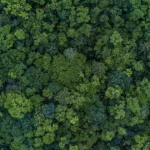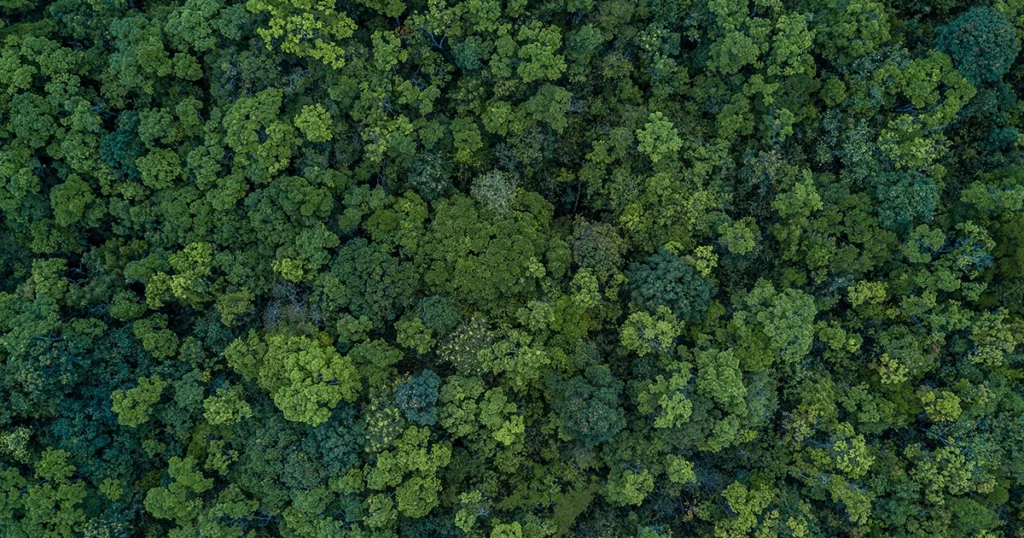The environment is a serious concern for consumers, business owners, and governments all over the globe. The more science confirms the effects of greenhouse gas emissions and global warming, the greater the focus on carbon dioxide and its impact on our natural environment.
For example, in 2022, the U.S. motor gasoline and diesel fuel consumption emitted around 1,023 million metric tons of carbon dioxide (CO2) into the atmosphere. That is only around 48% of the total carbon emissions from all kinds of industries and sectors. Everything from fossil fuels used to heat a house to a plane ride to Disney results in some CO2 emissions.
Why does this matter? Why look closely at carbon emissions? Adding more carbon dioxide to the atmosphere supercharges the natural greenhouse effect, resulting in rising global temperatures. However, there is a way to fight back against these emissions by purchasing lots and credits on the forest carbon market.
What is the Forest Carbon Market?
The next time you fly Southwest Airlines or United, ask if you can purchase a carbon offset. Each major airline has a mechanism in place so passengers can get the peace of mind they are offsetting their travel by ensuring trees are safe, doing their job of removing carbon dioxide, and protecting them for the future.
That is the entire idea behind the forest carbon market. Instead of cutting down trees from a landowner’s property, a broker shows up and promises to pay the owner to stop deforestation or development from happening. Instead, the trees are protected, and the photosynthesis that pulls carbon dioxide out of the air is sold to companies in units.
If a business like Ford Motor wants to continue operations without reducing its environmental impact through efficiencies or not using fossil fuels, it can purchase forest carbon market offsets to make up the difference.
How Does this Work?
The forest carbon market is much like any other marketplace in the world. Instead of looking for a stuffed animal on eBay, you purchase a unit of carbon offsets on land. One forest carbon offset is around one metric ton of carbon dioxide. So, if you have 100 metric tones of carbon emissions, you will need 100 carbon offsets from someone’s land.
In most cases, these carbon offset purchases are found in one of three ways:
- Credits from replanting trees on acres of land.
- Protecting a unit of trees from future harvesting or fire.
- Improving the forest management of an area to boost carbon storage.
What Does this Mean for Landowners?
As you can imagine, the value of selling carbon offsets on the market is carefully watched by owners and entrepreneurs alike. The good news is that reducing carbon dioxide emissions of any kind benefits everyone, not just the landowners and businesses seeking to offset their processes.
Carbon farm markets have resulted in the emergence of “carbon farming” and “regenerative agriculture.” These are processes where a landowner cultivates the area for trees to sell to a carbon broker for a profit.
You can also combine carbon offsets with clean energy. For instance, there is a way to have a wind farm on the land to produce royalties while also receiving carbon credits and offsets using the soil, trees, and grazing area. You could even grow flowers for bees and sell those carbon offsets.
How Do I Find the Current Carbon Offset Pricing?
While the forest carbon market is not on the DOW or NASDAQ, it functions in just about the same way. A website like CarbonCredits.com lists the current real-time value of a carbon credit in the UK, EU, and even California. At the time of this writing, a single unit of carbon credit was worth $28.66 for California.
In addition, different industries have voluntary market valuations. That could be a nature-based, tech-based, or aviation industry application. With that much demand, the forest carbon market is expected to grow anywhere from $5 billion to $50 billion by 2030.
The challenge is you really need a broker to know the valuation of your property. If you were to plant, for example, 250 shade trees, you would have around $62,000 in revenue for a 40-year contract to keep those trees protected. That is on the higher end, but seeing how you can plant about 435 shade trees in a single acre, you can see how there is a lot of money to be made when done correctly.
Final Thoughts
Trying to cultivate any land for use on the forest carbon markets does take a little work. You’ll need to verify the carbon offset valuation from a recognized entity, but once everything is clear and properly outlined, you can sell using a broker or through private exchanges.

